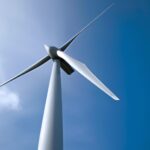Energy-efficient technologies and solutions empower individuals and organizations to reduce energy consumption and limit their environmental impact. These advancements take various forms, from smart thermostats that optimize heating and cooling to LED lighting systems that dramatically decrease electricity usage. Additionally, efficient appliances and insulation materials help conserve energy in homes and buildings. Renewable energy sources like solar power and wind turbines offer sustainable alternatives to traditional fossil fuels. These innovations not only save money in the long run but also contribute to a cleaner and healthier planet. Implementing energy-efficient solutions supports a more sustainable future, creating a positive impact on both individuals and the global community.
Table of Contents
- Benefits of energy-efficient technologies
- Case studies of successful energy-efficient projects
- Future developments in energy-efficient technologies
- Implementation of energy-efficient solutions
- Types of energy-efficient technologies
(10 Ways to Make Your Home More Energy Efficient)
Energy-efficient technologies and solutions play a crucial role in reducing energy consumption and mitigating the environmental impacts of our daily activities. These innovative solutions are designed to maximize energy efficiency while minimizing waste.
One such technology is LED lighting. LED bulbs are far more efficient than traditional incandescent bulbs, consuming much less energy and lasting significantly longer. They also emit less heat, reducing the strain on cooling systems and further conserving energy.
Smart thermostats are another energy-saving solution. These devices learn your patterns and preferences, automatically adjusting the temperature accordingly. This leads to optimal energy usage and substantial cost savings. Additionally, smart thermostats can be controlled remotely via smartphone apps, providing convenience and control from anywhere.
Home insulation is an essential consideration for energy efficiency. Properly insulating walls, windows, and roofs limits heat transfer, reducing the need for excessive heating or cooling. This not only saves energy but also creates a more comfortable and consistent indoor environment.
Renewable energy sources, such as solar panels and wind turbines, are gaining popularity as sustainable alternatives to fossil fuels. Solar panels harness the sun’s energy, converting it into electricity, while wind turbines generate power from the wind. Both options are clean, renewable, and have minimal impact on the environment.
Building automation systems integrate various technologies to optimize energy usage in commercial buildings. These systems monitor and control lighting, HVAC, and other energy-consuming systems, ensuring efficient operation throughout the facility.
By adopting these energy-efficient technologies and solutions, we can reduce our greenhouse gas emissions, conserve natural resources, and create a more sustainable future. As individuals, businesses, and communities, we have the power to make a positive impact on our environment through the choices we make. Let’s embrace these technologies and build a greener, more energy-efficient world together.
Benefits of energy-efficient technologies
Energy-efficient technologies offer numerous benefits, making them a crucial solution for addressing energy challenges and protecting the environment. One key advantage is their ability to reduce energy consumption, resulting in lower utility bills for consumers and businesses alike. By maximizing energy efficiency, these technologies help individuals and organizations save money while promoting sustainability.
Another advantage of energy-efficient technologies is their positive impact on the environment. By reducing energy consumption, they help decrease greenhouse gas emissions, mitigating climate change. This is particularly important considering the urgent need to address global warming and its detrimental effects. Energy-efficient technologies contribute to a greener future by decreasing the reliance on fossil fuels and promoting the use of renewable energy sources.
Furthermore, energy-efficient technologies improve the overall quality of life. By minimizing energy waste, these technologies promote a more sustainable and resilient infrastructure. They enhance the comfort and livability of buildings, ensuring better indoor air quality and more pleasant living environments. Additionally, energy-efficient technologies help reduce strain on the power grid, resulting in a more reliable electricity supply for individuals and businesses.
Apart from environmental and economic benefits, energy-efficient technologies also create jobs and drive economic growth. As the demand for such technologies increases, so does the need for skilled workers to develop, install, and maintain them. This leads to the creation of new job opportunities, promoting economic development and providing energy-related solutions.
Energy-efficient technologies also foster innovation and technological advancements. As the global demand for energy-efficient solutions grows, it encourages research and development in this field. This, in turn, leads to the discovery and implementation of new technologies, fostering innovation and driving progress.
In conclusion, energy-efficient technologies offer a multitude of benefits that make them an essential solution in addressing energy challenges and protecting the environment. They help reduce energy consumption, lower utility bills, decrease greenhouse gas emissions, and improve quality of life. Additionally, they create jobs, drive economic growth, foster innovation, and contribute to a sustainable and resilient future. Embracing energy-efficient technologies is crucial in ensuring a greener and more prosperous world for future generations.
Case studies of successful energy-efficient projects
Case studies of successful energy-efficient projects highlight the positive impact that adopting energy-efficient technologies and solutions can have on both the environment and the bottom line.
One such case study is the retrofitting of a commercial building in a major city. By implementing energy-efficient measures such as LED lighting, smart HVAC systems, and insulation upgrades, the building was able to reduce its energy consumption by 30%. This not only resulted in substantial cost savings for the owner but also significantly lowered the building’s carbon footprint.
In another case study, a manufacturing plant revamped its production processes to minimize energy waste. By optimizing equipment settings, improving insulation, and installing energy-efficient motors, the plant was able to reduce its energy consumption by 20%. This not only saved the company money on their utility bills but also showcased their commitment to sustainability.
A noteworthy example of energy-efficient technology is the implementation of solar panels in a residential community. By harnessing the power of the sun, these homes were able to generate clean and renewable energy, reducing their dependence on traditional energy sources. This not only resulted in lower energy bills for residents but also contributed to the overall reduction of greenhouse gas emissions.
Another compelling case study focuses on the retrofitting of a university campus with energy-efficient lighting and heating systems. By replacing outdated fixtures with LED lights and upgrading to high-efficiency boilers, the campus was able to reduce its energy consumption by 25%. This allowed the university to redirect funds towards other initiatives while also demonstrating its commitment to sustainability and responsible energy management.
These case studies demonstrate the tangible benefits and potential of energy-efficient technologies and solutions. From cost savings to reduced environmental impact, businesses and communities alike can reap the rewards of implementing energy-efficient practices. It is clear that investing in energy efficiency is not only a financially wise decision but also an environmentally responsible one.
In conclusion, case studies of successful energy-efficient projects provide real-world examples of how energy-efficient technologies and solutions can make a positive impact. By showcasing the benefits of implementing such measures, these case studies inspire others to follow suit and contribute to a more sustainable future.
Future developments in energy-efficient technologies
Future developments in energy-efficient technologies are set to revolutionize the way we consume and generate energy. With the growing global demand for cleaner and more sustainable energy solutions, researchers and innovators are working tirelessly to develop technologies that are not only efficient but also environmentally friendly.
One area of focus in future developments is renewable energy sources. Solar panels, for instance, are becoming increasingly popular and affordable, with advancements in technology making them more efficient at converting sunlight into electricity. Similarly, wind turbines are being designed to capture energy from even the slightest breeze, making them ideal for both urban and rural environments.
Another promising development is in the field of energy storage. As renewable sources like wind and solar are intermittent, finding efficient ways to store excess energy for later use is crucial. Battery technology is advancing rapidly, with more durable and long-lasting batteries being developed. This will enable homes and businesses to store excess energy during off-peak hours and rely on it when demand is high.
Smart grids are also expected to play a significant role in the future of energy efficiency. These intelligent systems automatically monitor and optimize energy consumption, reducing waste and increasing efficiency. By using real-time data to manage supply and demand, smart grids can ensure that energy is distributed more effectively and reduce the strain on existing infrastructure.
In the transportation sector, electric vehicles (EVs) are gaining traction as a cleaner alternative to traditional gasoline-powered cars. As battery technology improves, EVs are becoming more practical, with longer driving ranges and faster charging times. The development of wireless charging technology is also making strides, allowing EVs to charge without the need for cumbersome cables.
Lastly, building design and materials are being reimagined to enhance energy efficiency. Insulated windows, energy-efficient appliances, and better insulation can significantly reduce the amount of energy needed to cool or heat homes and buildings. Additionally, sustainable materials like recycled steel and eco-friendly concrete are being used to construct structures that have a smaller carbon footprint.
In conclusion, future developments in energy-efficient technologies hold great promise for a more sustainable and cleaner future. Advancements in renewable energy sources, energy storage, smart grids, electric vehicles, and building design are all contributing to a greener and more efficient world. As these technologies continue to evolve and become more accessible, it is vital that governments, businesses, and individuals embrace them, paving the way for a brighter future for generations to come.
(Technologies and Solutions to deliver improved Energy Efficiency in Buildings)
Implementation of energy-efficient solutions
Implementing energy-efficient solutions is essential in today’s world as we strive towards a sustainable future. These solutions not only help reduce energy consumption but also decrease greenhouse gas emissions, contributing to a cleaner environment. Through the effective implementation of energy-efficient technologies and strategies, we can make a significant positive impact on our planet.
One of the key areas where energy efficiency can be improved is in buildings. By incorporating energy-efficient materials and designs, we can reduce the amount of energy required for heating, cooling, and lighting. For example, using well-insulated windows and roofs can prevent heat loss during winter and minimize the need for heating systems. Additionally, installing energy-efficient lighting systems, such as LED bulbs, can significantly reduce electricity consumption in both residential and commercial buildings.
Another important aspect of energy efficiency is the adoption of renewable energy sources. Solar panels, wind turbines, and hydropower systems can provide clean and sustainable energy. Implementing these systems not only reduces our reliance on fossil fuels but also helps combat climate change. Governments and businesses can incentivize the use of renewables by providing financial support and tax benefits, making it more affordable and accessible for everyone.
Transportation is another sector where energy efficiency plays a crucial role. Electric vehicles (EVs) are becoming increasingly popular due to their lower emissions and reduced reliance on fossil fuels. Encouraging the use of EVs through infrastructure development, such as electric charging stations, can help promote their adoption. Additionally, improving public transportation systems, such as buses and trains, can reduce the number of individual vehicles on the road, leading to less energy consumption and decreased pollution.
To ensure successful implementation of energy-efficient solutions, it is essential to raise awareness and educate individuals and communities. Promoting energy conservation practices, such as turning off lights when not in use, adjusting thermostats, and using energy-efficient appliances, can make a significant difference in reducing energy consumption. Government initiatives and educational programs can play a crucial role in spreading awareness and empowering individuals to make sustainable choices.
In conclusion, the implementation of energy-efficient solutions is crucial for a sustainable future. Through adopting energy-efficient technologies and strategies in buildings, promoting renewable energy sources, improving transportation systems, and raising awareness, we can make a positive impact on our environment. By working together, we can create a more energy-efficient world for future generations.
Types of energy-efficient technologies
Energy-efficient technologies play a crucial role in reducing energy consumption and combating climate change. There are several types of energy-efficient technologies available today that can be implemented in various sectors to maximize energy savings.
One type of energy-efficient technology is LED lighting. LEDs, or light-emitting diodes, are much more energy-efficient than traditional incandescent or fluorescent bulbs. They consume less electricity and have a longer lifespan, making them a cost-effective choice for both residential and commercial lighting.
Another energy-efficient technology is smart thermostats. These devices can learn and adapt to a household’s heating and cooling patterns, optimizing energy usage accordingly. By automatically adjusting temperature settings when residents are away, smart thermostats help to minimize unnecessary energy consumption and reduce utility bills.
Insulation is a vital energy-efficient technology for buildings, as it helps to prevent heat transfer between the interior and exterior spaces. Proper insulation reduces the need for excessive heating or cooling, thereby saving energy and improving thermal comfort.
Energy-efficient appliances are also gaining popularity. For example, ENERGY STAR-certified appliances, such as refrigerators, washing machines, and air conditioners, are designed to consume less energy without compromising performance. Using these appliances can significantly reduce energy consumption in households.
Renewable energy technologies, such as solar panels and wind turbines, are key contributors to the transition towards a sustainable future. Solar panels convert sunlight into electricity, while wind turbines generate energy from wind power. Both technologies harness clean and renewable sources, reducing reliance on fossil fuels and minimizing environmental impact.
Building automation systems offer advanced energy management solutions for commercial buildings. These systems monitor and control various building functions, such as lighting, HVAC, and security, to optimize energy usage. By integrating different systems and using sensors and programmable logic controllers, building automation systems ensure efficient operation and reduce energy waste.
Lastly, electric vehicles (EVs) are revolutionizing the transportation sector by providing an eco-friendly and energy-efficient alternative to conventional combustion engine vehicles. EVs run on electricity, producing zero tailpipe emissions, and can be charged using renewable energy sources.
In conclusion, energy-efficient technologies encompass a wide range of options that can be implemented in various sectors. From LED lighting and smart thermostats to renewable energy technologies and electric vehicles, these technologies play a crucial role in conserving energy, reducing greenhouse gas emissions, and mitigating the impacts of climate change.













